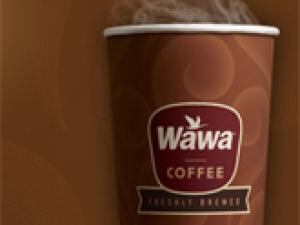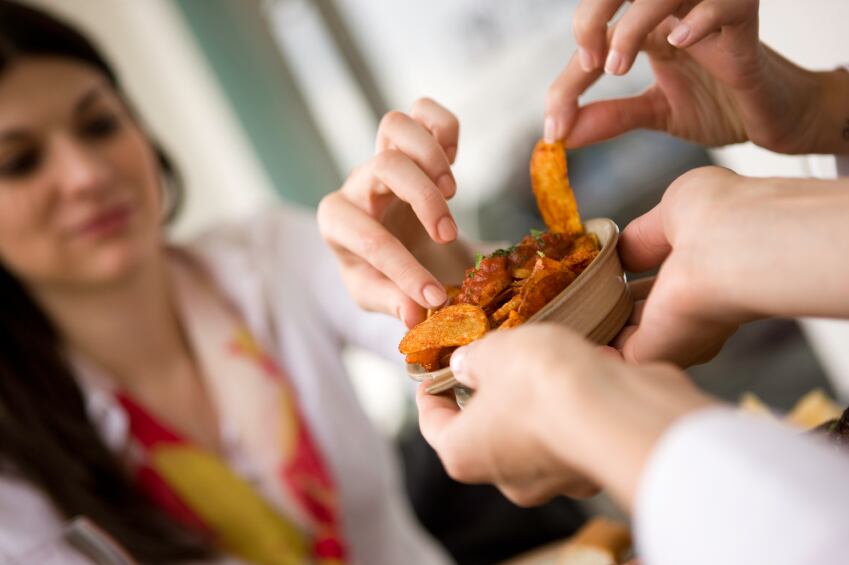Well, the opposite was true for the group of panelists pleading with attendees of the 2014 National Restaurant Association Show in Chicago last month to see the growing threat supermarkets, mass merchants and convenience stores pose to foodservice market share. But it seems both segments can learn from the brands and retailers that are thinking outside the box.
“It’s a changing food marketplace,” Bill Cross, senior vice president of business development, Broad St. Licensing Group, told attendees. “Five years ago, I tried to have a conversation with Darden Restaurants about bringing their products to retail and they didn’t want to do that. Now they’re selling Red Lobster. Be afraid. Be very afraid.”
The power of licensing
Cross provided several examples of fast-casual restaurant chains that have successfully launched brands at retail. TGI Fridays, which has been at it the longest, has been so successful with its $250 million line of frozen snacks and appetizers that Cross said his youngest daughter, who was a hostess at TGI Friday’s restaurants, received numerous demands from restaurant patrons for the retail appetizers (though they’re not on any menus). California Pizza Kitchen likewise gets roughly “seven figures a year in royalties” through its retail products sold by Nestle, he said, adding that licensing is more important than ever for foodservice brands.
Starbucks is one example of a company that’s very aggressive about licensing at retail, even in spite of breaking a 12-year distribution relationship with Kraft in 2011 in order to control its own strategic brands at retail. “Starbucks gets it. They really understand that you often run into resistance to support your program at retail. They lost that lawsuit filed by Kraft, but in the meantime, went out on their own and promoted with coupons and bouncebacks [discounts after purchase].”
Elsewhere, PF Chang’s (whose Home Menu line of frozen meals and appetizers was sold by Unilever in 2011 to ConAgra Foods) defied the idea that “you have to be a fast food chain to do well at retail,” in that it was the first to broach the $8.99 to 9.99 realm with its frozen entrees for two. “It was unheard of at the time,” Cross said. “Most frozen food remained in the $3.99-to-$5.99 price point.”
Other prominent restaurant brands on grocery store shelves range from Subway and Dunkin’ Donuts to White Castle, with big names like Burger King, Boston Market and McDonalds all dipping their toes into licensing.
And yet, many foodservice companies establishing a retail presence begin with center-store offerings like dressing or BBQ sauce, which Cross calls “chump change.”
“All the action is happening at the perimeter of the store—in frozen or fresh foods. You don’t want to be in the BBQ sauce aisle alongside hundreds of other brands. That’s not where you want to take brand to retail,” he said.
The Great Recession’s impact on food shopping
So why are the lines separating retail and foodservice increasingly blurred? Much of it can be attributed to the Great Recession, Cross said.
During the worst US economic downturn since the Great Depression, people stopped buying houses, cars and clothing. They dined out less; but they still had to eat. So guess who made money? Grocery stores.
“Not all of them,” Cross noted. “Safeway, with its expensive reputation, didn’t make much. But Walmart made so much in its grocery division that Target said, ‘we blew it,’ and started offering more food.”
Now many Targets are being converted from just hard goods to grocery and hard goods. Even Ikea sells food. “Some are superstars with merchandising food, including many convenience stores. People laugh at c-stores, but they have changed enormously.”

Highlighted as a prime example of successful retail/foodservice hybridization in a c-store format was Media, PA-based c-store/gas station chain Wawa Inc., which commands Atlantic market with $9 million in annual revenue. The chain specializes in fast casual to go, or as Mike Sherlock, vice president of fresh food & beverage put it, “helping customers get on their way.”
“Customers are looking for fast-casual quality, but they’re also looking for speed of service and the value of fast food as well,” he said. “For any operator, what we feel you need to pinpoint is: What do you want to be known for? For us, that was breakfast sandwiches, hoagies and beverages. We want to own the market share in those arenas, so we invested heavily there. Now we own the market share for coffee and we’re number two in breakfast sandwiches behind McDonald’s.”
So why should CPGs care? Because grab and go and breakfast are becoming two of the most important areas to jostle for consumers’ limited attention.
80% of Americans don’t know at 4 pm what’s for dinner
Indeed, while consumers didn’t eat out as much during the Great Recession, they didn’t cook much more, either, turning instead to grab-and-go fresh and frozen options at the supermarket, said Jim Matorin, business catalyst at Smarketing LLC.
“Eighty percent of Americans don’t know at 4pm what’s for dinner,” Matorin said. “Will I eat out or eat at home? More and more are picking up ready-made items to take home to eat.”
Since 2008, the only growth for restaurant traffic has been with the morning meal, while retail sales of lunch items have more than doubled, he said, citing numbers from market research firm NPD Group. Overall, meal occasions away from home went from 208 in 2007 to 192 in 2013.
What’s more, he said, is “we also have to worry about consumers’ lifestyles—they’re strapped for time and they’re doing everything on multiple screens. This is impacting their behavior, thus the need for grab and go. We watch TV while we download a movie and send emails, with our phones in one lap and our tablets in the other.”
On-the-go lifestyle spurring growth in snack foods

The purchasing power of this multitasking, super-plugged in generation is growing: The so-called Indie Woman (27-plus working women) group is now 31 million strong, controlling about $50 billion in food and beverage sales. “They want to stay healthy, but they’re suffering from time deprivation. So they’re looking for something quick on the way to the gym or work,” Matorin added.
Of the roughly 80 million Millennials, 22% are Millennial moms. This tech-savvy, stressed-for-time segment is similarly on the hunt for quick, easy, nutritious foods for them and their children. As the Hartman Group reported that 92% of households in the last month ate an average of 2.35 snacks per day, Matorin said he suspects all of this could mean the future of eating is in mini meals and snacking.
“Snacking is clearly not going away,” Matorin said. “I think it’s affecting the way we’re eating and where we get food. Half of the food and beverage we consume in our houses or away from home is a snack.”
And while restaurants are capitalizing on the breakfast daypart, the emerging class of breakfast-time “snacks”—be they a cup of yogurt, a portion-controlled bag of nuts or squeezable nut butter, a bar or an RTD beverage—means the potential is strong for CPGs to steal back market share from foodservice through innovative on-the-go options.
“NPD Group says breakfast snacking increased by an average of 22 morning snacks per person since 2002. Consumers are rushing off to their jobs and don’t have time to sit down for breakfast.”
Cross added: "The challenge for everyone in the food business is this: consumers can move about more and eat what they want when they want it. Think about what segment you want to serve and what you'll offer. Get your product to market quickly and communicate to the younger crowd with technology. You're all competing in the food business, not just with other restaurants."
